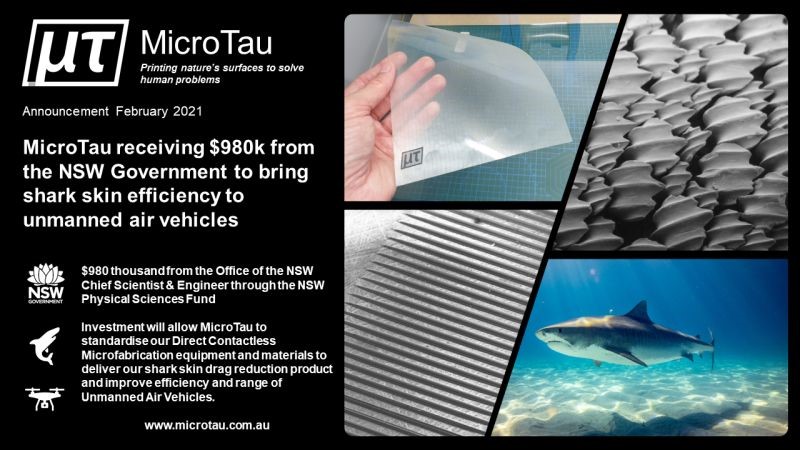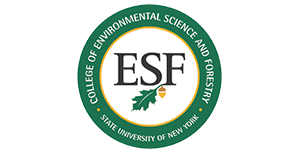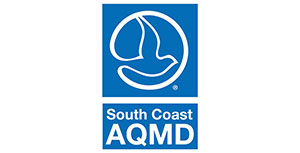RadLaunch 2024
Connecting Technology Start-Ups to UV+EB Industry Leaders
RadLaunch winners, our class of 2023
RadTech Winners
Kinetic Glass
Smart Glass Labs
The problem with many current smart glass offerings is that the growth of the market has been anemic and current technologies are neither fully sustainable nor do they adapt to sustainable manufacturing methods. At the same time, many customers, real estate owners and occupants are not satisfied with the comfort nor the features of the current offerings. Kinetic Glass, also known as switchable smart glass, is a form of glass invented by Smart Glass Labs (SGLabs) that allows on-demand opacity (privacy) and light control using minimal energy. As the product enables privacy and light control, it is desirable for use in a variety of applications, such as windows, doors, partitions, and skylights.
According to SGLabs, this novel product meets the demands for sustainability, and the need for providing comfort and lively views to the end-user–and at the same time, will help mitigate some of the effects of climate change due to its ability to act as an IR barrier. Because of the high value add-on of Kinetic Glass, it increases the overall real and perceived value of the property for the real estate investors and building owners.
UV photopolymerization is one of the core technologies of SGLab’s Kinetic Glass. The UV process is a key and necessary step to ensure the durability of the Kinetic Glass. By testing and adapting the use of various UV materials and UV processes, SGLabs can ensure superior aesthetics, seal protection and structural stability, for the next generation of dynamic glass. The potential customers for the Kinetic Glass are mid-scale window and door manufacturers and early adaptors in the residential and commercial markets located in the United States.
Axtra3D
Hybrid PhotoSynthesis (HPS)
Hybrid PhotoSynthesis (HPS) technology is a potentially transformative hybrid light engine solution for Photopolymer Additive Manufacturing. Laser and DLP are two of the traditional light engines used to cure photopolymers for 3D printing, but each comes with tradeoffs. Lasers offer high accuracy, surface quality and scalability but lack print speed. DLP offers a high print speed but lacks the same accuracy. For the first time, HPS offers the combined advantages of the two light engines, DLP and Laser. HPS brings together the energy from the two light sources and creates a harmonized light engine that unifies every value, including wavelength, power, curing time, and simultaneous operation. The result is that HPS eliminates the tradeoffs between DLP and SLA and offers the combined advantages of DLP and SLA.
These advantages include extremely high surface quality, accuracy, print speed, fine resolution and a scalable print area without loss of resolution or speed. “In our HPS technology, the DLP and Laser operate simultaneously, at the same wavelength, and deliver the same energy density. The result is that the standard DLP and/or Laser printing materials can be used in HPS without the need to develop new materials exclusively for this technology. In short, HPS offers Injection Molding quality using AM. ” The company reports that RadLaunch may best help with technology information and networking–as HPS technology evolves, it is intended to extend applications into areas outside Additive Manufacturing.
Mogassam 3D
Special Emerging Market Award
With offices in Cairo, Egypt, Mogassam 3D is developing an ‘all-in-one’ 3D printing platform which integrates the print, wash, and cure steps into a single automated workstation for dental offices. Through the use of automatic processing and assistive AI design elements, Mogassam 3D has made 3D printing accessible to a larger audience of dental offices with limited DFAM (design for additive manufacturing) know how. Furthermore, by automating the process, Mogassam’s hardware is able to help minimize user error and has enabled private dental offices to achieve higher rates of success and better financial returns. Their initial target markets have been chair-side printing in North Africa and the Middle East, where they have already seen great success. In the coming years, they are looking to expand their technology into the United States.
Eastern Michigan University
Special University Award
Prof. Vijay Mannari, Director of the Coating Research Institute (CRI) of Eastern Michigan University has established a rigorous research program with a substantial focus on developing sustainable polymeric materials and processes for advanced coatings. The CRI is dedicated to providing solutions to some of the tough problems facing the coatings industry.
In recent years the CRI has focused on the development of environmentally sustainable polymeric materials and processes for UV-cure coatings. Dr. Mannari’s research group has developed sustainable bio-renewable derived UV oligomers, water-based UV-curable polyurethane dispersions with high bio-renewable contents, and dual-cure systems using click chemistry, to name a few. His recent work on UV-initiated Organic-Inorganic Hybrid (OIH) coatings and thin films by sol-gel mechanism have been awarded a U.S. patent 11,414,524. Building on this invention, the Mannari research group is now developing prototype coating systems for exploring applications in automotive, aerospace, additive manufacturing (AM), and in the battery space. UV-curing technology offers immense opportunities for reducing the carbon footprint of many industrial coating operations. “Guided by the principles of green chemistry and engineering, our research group is combining strengths of bio-renewable materials, efficient crosslinking chemistries, and novel processing techniques for developing a platform for sustainable materials that will advance UV-cure technology and enhance the sustainability of industrial products,” says Prof. Mannari.
RadLaunch winners, our class of 2021
RadTech Winners
Biomass Derived Chromophores for Radiation Curing
Prof. Jayaraman Sivaguru et al, Bowling Green State University, and Gregory Carroll, Ph.D., NRC Senior Research Associate at the Air Force Research Laboratory
The vibrant colors that enhance Nature’s elegance play a critical role in various chemical and biological processes. Translating these colors, which are dictated by the presence of chromophores, to curing technology is challenging as it requires rational manipulation of excited-state properties.
Jayaraman Sivaguru, Ph.D., the Antonia and Marshall Wilson Professor of Chemistry and Associate Director, Center for Photochemical Sciences, at Bowling Green State University, Ohio, is leading the effort in collaboration with Gregory Carroll, Ph.D., NRC Senior Research Associate at the Air Force Research Laboratory, Sruthy Baburaj, graduate student at Bowling Green and Sheila Asiago, PhD candidate at Bowling Green, as they explore translating biomass derived compounds that can be fine-tuned for radiation curing with both UV and visible light.
The biomass derived compounds are fine-tuned to feature superior photochemical properties than the conventional compounds featuring similar chromophores. Sivaguru’s team is working on translating these novel biomass derived compounds as curing systems with high efficiency.
Mighty Buildings
A construction technology company based in Oakland, California, Mighty Buildings is innovating the construction industry by creating beautiful, affordable and sustainable homes using 3D printing, advanced materials and robotics automation. Co-founders Alexey Dubov, Sam Ruben, Slava Solonitsyn and Dmitry Starodubtsev aim to unlock productivity in construction by combining 3D printing and prefab, making construction more sustainable, efficient and affordable.
The company’s large-scale 3D printers use a proprietary thermoset composite material that the co-founders invented, Light Stone Material (LSM), that can be 3D printed and that hardens almost immediately thanks to a UV-curing process, while also maintaining cohesion between layers to create a monolithic structure. LSM is four times lighter than concrete, has a high thermal resistance and is watertight, sturdy and fire resistant. This 3D printing technology allows Mighty Buildings to produce modular houses and building components much faster than traditional construction.
Mighty Buildings has a near-zero waste production process, preventing 1,100 – 2,000 kg of CO2 emission per 3D printed home. Committed to achieving Net-Zero by 2028, the company is 22 years ahead of the construction industry. Certified under California’s Factory Built Housing program to build units using 3D printing, the company is the first company to achieve certification under the UL 3401 standard for evaluating building structures and assemblies. Mighty Buildings is backed by notable international and Silicon Valley tech investors, including Khosla Ventures, Zeno Ventures and Y Combinator.
3D Printed Ceramic Resins
Tethon 3D
Tethon 3D, Omaha, Nebraska, manufactures universal UV photocurable ceramic resins that are used in numerous SLA, DLP and other vat polymerization 3D printers, and has an R&D facility that formulates custom additive manufacturing UV curable materials. Executive chairperson Karen Linder, Trent Allen, CEO and Gregory Pugh, CTO, lead the company to produce high quality ceramic materials for diverse industrial, consumer and design industries.
With over 1,000 customers in 40 countries, Tethon 3D serves clients in aerospace, electronics, defense, energy, biomedical and other industries that desire the physical properties of ceramics and the complex geometries made possible by 3F printing.
The company also sells a desktop DLP 3D printer optimized for highly viscous and/or opaque photopolymer composites, including ceramics and metals, and Tethon 3D offers proprietary resins for this printer. Tethon 3D accepts contracted service R&D projects to develop a variety of custom UV curable materials.
Multi-Color Visible Light Additive Manufacturing
Prof. Zachariah Page et al, University of Texas at Austin
A limitation to using high-energy UV/violet light in additive manufacturing is that degradation and attenuation narrow the scope of materials which can be used. While tapping visible light can open the door to more materials – including biological compounds, nanocomposites and materials with multiple structures – the photochemistry required for visible light has had unacceptably slow reaction times.
The research team led by Zachariah A. Page, Assistant Professor in the Department of Chemistry at The University of Texas at Austin, is developing high resolution stereolithographic 3D printing using different colors of low energy visible light to rapidly solidify resins. Key to the research is the team’s formulation of panchromatic photopolymer resins.
It has been shown that X-rays generated by high powered electron beam accelerators (already used for decontamination of mail for the US Postal Service since 2002 and for medical device sterilization) can efficiently convert (meth)acrylate formulations commonly used in radiation curable coatings into functional cured matrices for carbon fiber composites, notably as used in automotive components.
Utilizing visible light will enable “spectral control” – the ability to dictate the chemical reaction that occurs by the color of incident light used. This color-specificity provides the foundation for multicolor additive manufacturing (McAM) that will facilitate the fabrication of multi-material objects with unprecedented precision and functionality.
Unique New Technology Award: E-Beam X-Ray Cured Carbon Fiber Composites
Dan Montoney, Rapid Cure Technologies, and Anthony Berejka, Ionicorp+
The RadLaunch Unique New Technology Award will be presented to Dan Montoney, Rapid Cure Technologies, East Syracuse, New York, and Anthony Berejka, Ionicorp+, Huntington, New York, for their work developing and testing X-ray cured carbon fiber composites. Their work was supported by the New York State Energy Research and Development Authority.
It has been shown that X-rays generated by high powered electron beam accelerators (already used for decontamination of mail for the US Postal Service since 2002 and for medical device sterilization) can efficiently convert (meth)acrylate formulations commonly used in radiation curable coatings into functional cured matrices for carbon fiber composites, notably as used in automotive components.
IUVA Winners
SoLED POU water disinfection - Team from Tel Aviv University
The population in developing countries have limited access to safe drinking water, causing diseases, poor nutrition, and a daily death rate of over 800 children under 5 years. In these countries most of the population live in rural areas, where there is no proper infrastructure and resources to support continuous water treatment e.g., inadequate or no piping systems, intermittent or no electricity, unskilled personnel for maintenance, and fragmented supply chain.
Led by Dana Pousty and Prof. Hadas Mamane from the Water Technology lab, Tel Aviv University, with the vision to prevent mortality and improve the health of billions of people in developing countries, SoLED is a solar-powered IoT water disinfection device designated for infrastructure-limited areas as developing rural countries. SoLED is a super-efficient UV-LED reactor based on a patented technology that provides maximum disinfection effect with minimum costs while enabling a solar-powered solution. The reactor could be seamlessly integrated into existing systems to assure virus treatment and lowering maintenance costs or provided as a stand-alone product integrated into any pipe. Our patent enables combining multiple frequencies (wavelengths), to dramatically reduce upfront costs and energy consumption and enhance the bacteria inactivation.
UV based filterless personal protection equipment - Open Source Project by HelpfulEngineering.org
UVisor is the world’s first filterless full face protection against COVID-19 and future biological threats, built as a fully-integrated, compact, battery operated and lightweight positive-air-pressure visor powered by a UV sterilization chamber. A technology demonstrator of the UVisor UV Chamber achieved >99.7% efficacy in testing by Sandia National Laboratories against MS2 surrogate virus. The UVisor has several design advantages over conventional masks including better protection, full face visibility, better comfort, and 100% reusability. Being filter-less also gives the UVisor several design advantages over currently available powered respirators – lighter, quieter, cheaper, and no bio-disposal or waste concerns, and by using UV for sterilization no consumable parts. The UVisor technology is also envisioned to be used for many other purposes including exhaled air purification, vent exhaust purification and other sterilization.
Novel UV-C sensor technology for use in air and surface disinfection applications - L&M Instruments
The COVID-19 pandemic brought attention to what many in the UVGI community already know: UV-C is highly effective in inactivating dangerous pathogens. As the market expands and the UV-C source technology advances (safer, higher fluence rate, faster kill), so does the demand on UV-C sensing technology.
L&M designs and manufactures stand-alone and networked (IoT) sensors and solutions that enable customers to manage business critical outcomes through the knowledge gained from precision, always-on sensors, analytics, and alerting. L&M sells products and licenses technology.
The novel UV-C sensor technology combines ultra-low power compute, precision light sensing, and flexible interfacing, resulting in a range of applicability for disinfection system providers and end-users alike.
A portable device to measure hydroxyl radical scavenging capacity in water samples - Team from the University of Toronto
The hydroxyl radical scavenging capacity of a water to be treated influences the effectiveness of advanced oxidation processes. Conventional methods for its measurement are time-consuming and need sophisticated instrumentation and expertise to carry them out. Chengjin Wang at the University of Toronto collaborated with Erik Rosenfeldt at Hazen and Sawyer to create a novel “external calibration” method to conduct fast and robust measurements of this parameter. The method is now being developed into a simple portable monitoring device that will empower the treatment plant to understand the variation of the scavenging capacity of water on a regular basis so that they can adopt corresponding measures to adjust and optimize their operation.
UVC wing, mobility + angle control - Dimer
A proprietary design offers unparalleled capabilities in the surface decontamination space. Dimer patents enable the ability to adjust the angle and position of a “UVC wing” to quickly deliver strong germicidal dosage to any high touch surface. This functionality allows the optimization angle of incidence and minimizes distance between the UV source and target surface, delivering consistent exposure across any surface–and fast. Additionally, integrated safety features make it the only operator-driven unit on the market, eliminating workflow inefficiencies.
RadLaunch winners, our class of 2020
HARP (High-Area Rapid Printing), Azul 3D
This three-year-old startup spun out of Northwestern University and is creating a paradigm shift in the plastics manufacturing sector via a revolutionary 3D-printing technology called HARP (High-Area Rapid Printing). HARP enables record-breaking throughput in the field of stereolithographic printing, regardless of size, by using a mobile liquid interface (a fluorinated oil) to reduce the adhesive forces between the interface and the printed object formed from photo-responsive resins. The bed area is not size-restricted by thermal limitations because the flowing oil enables direct cooling across the entire print area. Importantly, HARP enables the use of both oxygen-sensitive and oxygen-insensitive photo-chemistries at rapid speeds (i.e., does not rely upon oxygen quenching). Resultantly, HARP broadens the scope of UV/EB technology for 3D printing beyond acrylates and methacrylates, being compatible with both photo-cationic and photo-acid initiated reaction mechanisms. Stemming from its industrial-grade photo-resins, HARP offers manufacturers the opportunity for higher throughput, limitless scale, and just-in-time mass production of diverse, customized, and complex products. Most recently, the technology was featured in an article in Science (Oct 2019) and has been featured in many news articles including in C&EN, Popular Mechanics, Economist, and Sciencemag.
Special IUVA student awards:
Innovative, Low-Cost, Water Purification Method by Leveraging the Synergetic Effect of UV and IR Radiation from the Sun, Sujay M. Swain, Montgomery Blair High School
Over one billion people in the world do not have access to clean drinking water. By using waste products, a low-cost water purification method to holistically purify water from physical, chemical and biological impurities was developed. Sugarcane bagasse was used to remove physical impurities and activated carbon synthesized from sugarcane juice was used to remove chemical impurities. Finally, by leveraging the synergetic effect of UVA and heat (from Sun), biological impurities were successfully removed. Resulting purified water met all the standards set by FDA. With the insight gained from this research, a portable water purification system using UVA LEDs is under development.
All-in-one (AIO) Solar-LED Purification Bottle for Every Home Use, Dana Pousty, Prof. Hadas Mamane, Water Research Center, School of Mechanical Engineering, Tel-Aviv University
The utilization of non-chemical disinfection systems for water treatment such as ultraviolet (UV) is increasing rapidly. Currently, the dominating systems are mercury-based low-pressure (LP) and medium-pressure (MP) lamps. These lamps are not optimal for point of use (POU) systems that are characterized by (a) intermittent or non-continuous water supplies, (b) need for off-the-grid applications, (c) release heat to the water and result in inorganic fouling, and (e) the high output power (MP lamps). UV light-emitting diodes (UV-LEDs) overcome these drawbacks with adjustable wavelengths according to the need, long life-time, constant output and operate at ambient temperatures. Moreover, they hold compact and flexible structures that enable adapted design. The water-tech lab at Tel-Aviv University is developing a solar-based UV-LED-based optimized point-of-use water treatment solutions by combining various wavelengths. This will open a new field of portable point-of-use home applications.
Real-time feedback controlled monomer conversion: a new paradigm for UV curing process control, Eindhoven University of Technology’s High Tech Systems Center and TNO (Eindhoven, The Netherlands)
To prepare UV curing technology for the imminent fourth industrial revolution, PhD researcher Thomas Hafkamp from Eindhoven University of Technology proposes a new paradigm for UV curing process control. The proposal consists of acquiring in-situ measurement data of monomer conversion from a spectrometer and feeding this data into a real-time feedback controller. The feedback controller computes a corrective action for the UV light source if the monomer conversion momentarily deviates from the intended value. This innovation makes the UV curing process more robust to disturbances and may prove to be an indispensable solution for quality control.
Solvent-free radical photopolymerization that continues its extensive post-conversion in the dark, Team from University of Colorado
A new photoinitiating system with unprecedented photo-efficiency and extensive post-conversion in the dark has been developed at the University of Colorado by the team of Kangmin Kim, Jasmine Sinha, Charles Musgrave, and Jeff Stansbury. This innovation allows reduced light exposure times while guaranteeing complete polymerization, even in situations involving compromised light access due to nonuniform light sources, irregular surfaces, or thicker samples that might otherwise preclude a photocuring process. This discovery will further elevate the green technology to a new standard and increase the scope of photocuring technologies into new application areas.
Bio-based 1,5-Pentanediol: A New Renewable Monomer for the Radcure Industry, Pyran LLC
The vast majority of chemicals are made from nonrenewable and often expensive petroleum (oil) resources. Pyran co-founders Professor George Huber, Dr. Kevin Barnett, and Dr. Kefeng Huang set out to find a better way, and discovered a new pathway to make a chemical called 1,5-pentanediol (1,5-PDO) from renewable resources, such as corn cobs. Pyran’s technology allows them to make their renewable 1,5-PDO at 30-50% lower costs than similar oil-based chemicals! Pyran’s 1,5-PDO product is a major component in many ultraviolet (UV) cure coatings – which are more efficient and produce much lower amounts of harmful emissions compared to conventional coating technologies – offering consumers environmentally friendly products that won’t break the bank.
Special RadLaunch University award:
Novel UV-initiated Dual-curing thermoset materials suitable for 3D printing, Hamidreza Asemani, Professor Vijay Mannari; Coatings Research Institute, Eastern Michigan University, Ypsilanti, MI
While 3D-printing is fast emerging as a fascinating technology of the future, one major challenge faced by 3D-printed products is their sub-optimum performance due to poor inter-layer adhesion between multiple stacking up layers in their assembly. A team of Prof. Vijay Mannari and Ph.D. candidate Hamid Asemani at Eastern Michigan University has developed a very meticulous solution to this challenge. They have designed a 3D printing material that cures by two independent cure mechanisms – one providing rapid green strength development for faster processing while the second one allows for chemical bonding between the layers – thus significantly enhancing final product performance. The proposed system is enabled by UV-curing technology making it efficient and environmentally responsible.

RadLaunch winners, our class of 2019
SUNY Albany, SUNY Polytechnic Institute
UV+EB curable Sulfluor, a fluorinated hypervalent sulfur containing polymer cured thin film; extremely hard, thermally robust, and patterns well—may find utility protecting sensor windows, displays, optical fibers, composite material surfaces, electronic devices and other surfaces where scratch resistance, chemical stability and hydrophobicity is important.
Laval University (Quebec City, Quebec, Canada) within the Forestry Geomatic and Geography Faculty in the Wood and Forest Science Department
Enhances hardness of Canadian hardwood through impregnation of acrylate monomers and electron beam polymerization.
Origin
Building an open material partner network to power innovation in materials for end use and made through additive mass production. Origin’s production system uses programmable photopolymerization (P3) to turn materials into isotropic parts and products ready for end-use.
MicroMaker3D
A new 3D printer for making the unimaginably small, enabling microfabrication level rapid prototyping for microsensors, wearable technology, IoT devices, micro-robotics, aerospace applications and more.
Ares Materials
Pylux Polysulfide thermosets, a class of transparent, optically-clear polymeric materials that allow for tuning physical properties to produce materials which tackle multiple applications, specifically engineered for the fast-growing flexible display markets—smartphone makers, displays, and display-related fabrication equipment.
Daetec, LLC
Protective encapsulant and sealing on-substrate, rapid cure for automotive assembly. Polymer compositing with reactive diluents makes it possible to use CAD fed delivery tools that offer cure on-contact, with robotic operated equipment on vertical, overhead, or irregular surface contours.
RadLaunch winners, our class of 2018.
Reboot Medical, Inc.: PhotoCast Casting Tape, light-cured composite tape that hardens on-demand, producing a rigid splint or cast.
Team from The Hebrew University of Jerusalem: Nanocrystal photocatalysts which fill an unmet need for efficient water-soluble photoinitiators for coatings and 2&3D printing.
The Foam Printing Project: Lightweight parts from resin that is foamed using a patent-pending process and solidified using a UV DLP 3D printer, parts have up to 75% gas fractions, are lighter weight and less expensive to produce.
Team from the University of Iowa: Transferrable Shadow Cure (TSC) decouples initiation and propagation mechanisms in cationic photopolymerization to address light penetration problems, thus providing full cure regardless of geometry, pigment and filler content, and sensitivity of material to light and heat.

RadTech International NA
6935 Wisconsin Ave, Suite 207
Chevy Chase, MD 20815
(240) 497-1242
uveb@radtech.org











